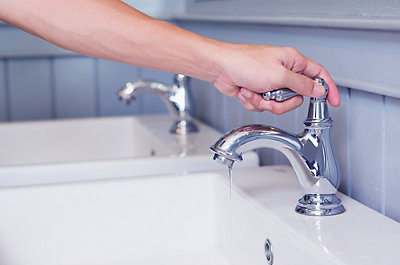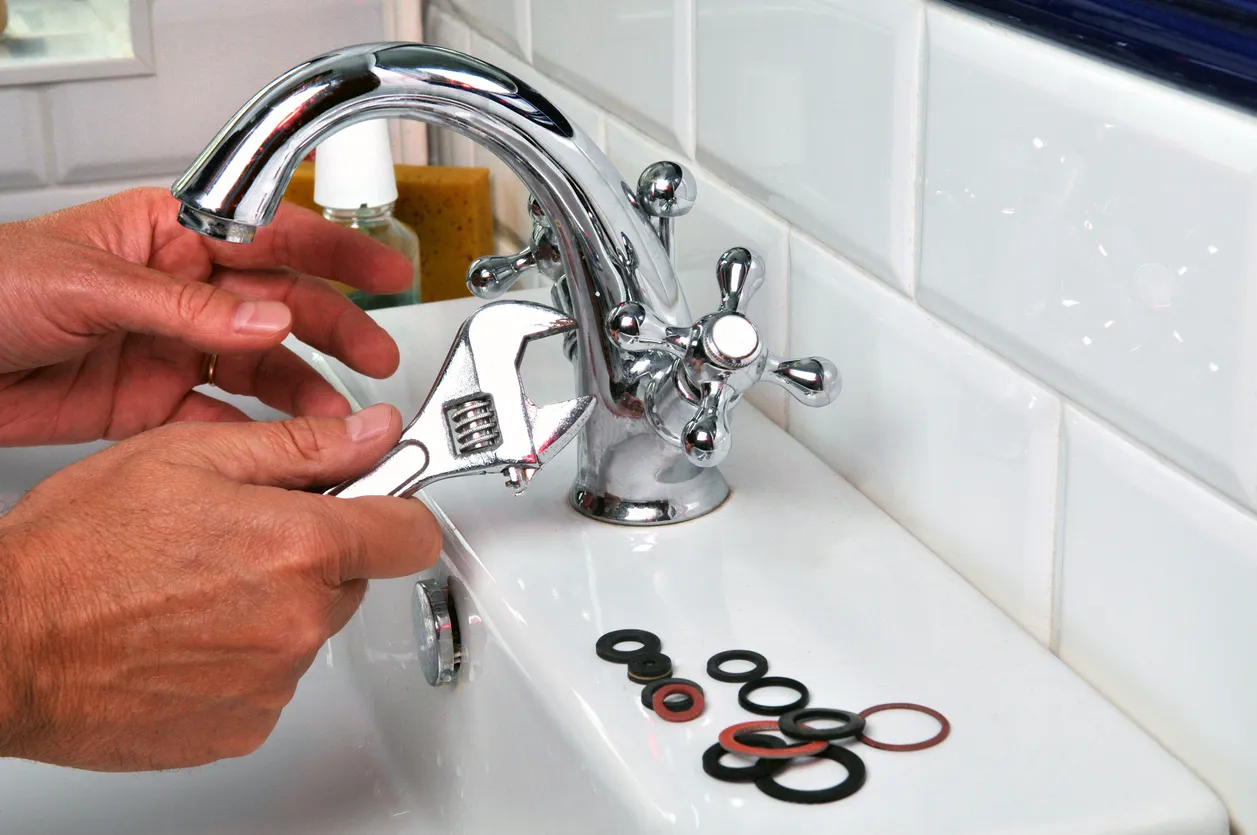What It's Significant to Fix a Broken Faucet
What It's Significant to Fix a Broken Faucet
Blog Article
What're your ideas about Water Dripping from Faucet: Why and How to Fix?

Dripping faucets may appear like a small aggravation, but their impact goes beyond just the nuisance of the audio. From drainage to sustaining unneeded monetary expenses and health and wellness dangers, overlooking a trickling tap can bring about different repercussions. In this article, we'll delve into why it's important to address this common household issue without delay and properly.
Waste of Water
Environmental Influence
Trickling taps add significantly to water wastage. According to the Epa (EPA), a single tap dripping at one drip per secondly can waste more than 3,000 gallons of water each year. This not just pressures water sources but additionally impacts communities and wild animals based on them.
Step-by-Step Guide to Dealing With a Dripping Tap
Tools Called for
Before trying to fix a leaking faucet, gather the required devices, including an adjustable wrench, screwdrivers, substitute components (such as washers or cartridges), and plumber's tape.
Typical Tap Issues and Their Solutions
Determine the sort of tap and the particular problem creating the drip. Usual problems include damaged washing machines, rusty valve seats, or defective O-rings. Refer to maker directions or on-line tutorials for step-by-step guidance on repairs.
Financial Prices
Raised Water Bills
Beyond the ecological influence, trickling taps can inflate water bills substantially. The built up wastage over time converts right into higher utility expenditures, which might have been stayed clear of with prompt fixings.
Prospective Building Damages
Moreover, long term leaking can bring about damage to components and surfaces bordering the faucet. Water buildup can cause discoloration, deterioration, and even architectural issues if left ignored, resulting in extra fixing costs.
Wellness Concerns
Mold and Mold Development
The continuous existence of wetness from a leaking tap creates an ideal atmosphere for mold and mold development. These fungis not just compromise indoor air quality but likewise position wellness risks, especially for individuals with respiratory conditions or allergies.
Waterborne Conditions
Stationary water in dripping taps can come to be a breeding place for bacteria and various other virus, raising the threat of waterborne diseases. Pollutants such as Legionella microorganisms prosper in stationary water, potentially leading to severe illnesses when ingested or breathed in.
Do it yourself vs. Expert Repair
Benefits and drawbacks of DIY Fixing
While some might attempt to fix a dripping tap themselves, DIY repairs come with their own set of obstacles. Without correct knowledge and tools, do it yourself efforts can worsen the problem or cause insufficient repair services, extending the problem.
Advantages of Working With a Specialist Plumber
Employing an expert plumber makes sure that the underlying source of the leaking faucet is attended to successfully. Plumbings have the competence and equipment to detect and repair faucet issues successfully, saving time and lessening the danger of further damage.
Ecological Duty
Specific Contribution to Conservation
Taking responsibility for repairing trickling taps aligns with broader efforts towards water conservation and environmental sustainability. Every person's actions collectively make a significant impact on preserving valuable sources.
Sustainable Living Practices
By prioritizing prompt repair work and embracing water-saving habits, people add to sustainable living methods that benefit both existing and future generations.
Preventive Measures
Normal Maintenance Tips
To prevent trickling faucets, do routine upkeep such as cleansing aerators, examining for leakages, and replacing worn-out parts immediately. Additionally, take into consideration mounting water-saving tools or updating to much more efficient components.
Significance of Prompt Repair Works
Addressing dripping faucets as quickly as they're observed prevents more water waste and potential damages, eventually conserving both water and money in the future.
Impact on Property Worth
Assumption of Well-Maintained Building
Preserving a home in good condition, including addressing upkeep problems like dripping taps, improves its perceived worth and charm among possible customers or renters.
Impact on Resale Value
Residences with well-maintained plumbing components, including taps, command higher resale values in the property market. Dealing with trickling faucets can add to a favorable impression throughout residential or commercial property examinations and negotiations.
Final thought
Resolving a dripping tap exceeds plain convenience; it's a vital step toward conserving water, minimizing financial prices, and safeguarding wellness and property. Whether through DIY repairs or professional support, acting to repair dripping faucets is a tiny yet impactful means to promote responsible stewardship of resources and add to a healthier, more sustainable future.
How to Fix a Dripping or Leaky Faucet
A leaking faucet is one of the most common problems that homeowners encounter, but it being commonplace doesn’t make it any less annoying. The constant drip drip drip of a leaking bathtub faucet, showerhead, or sink tap can disturb your home’s serenity. Left neglected, a dripping faucet can also result in higher water bills and discoloration or mold growth in your sink or plumbing fixtures.
Fortunately, you don’t have to be a trained plumber to know how to stop a dripping faucet. With some basic tools, replacement parts, and a little patience, leaky faucet repair is a breeze. In this article, we’ll explain what causes dripping faucets and how you can fix them.
What Causes a Leaking Faucet?
Kitchen and bathroom faucets come in all manner of designs, but most involve some combination of valves, O-rings, seals, and washers. The O-ring is usually the weakest link, but any one of these pieces can wear down over time. Heat, moisture, temperature fluctuations, minerals, mold, and movement can contribute to warping and corrosion, breaking the watertight seal. This just comes with the territory of being a homeowner. Everything is always subject to wear and tear, and some component parts of your appliances and fixtures need to be replaced on occasion. At least replacement O-rings are cheap!
More rarely, dripping faucets can be a symptom of excessively high water pressure. Were this the case in your home, you would probably notice that the leak is not isolated to one faucet. Water pressure issues are harder to resolve on your own. We recommend contacting a professional plumber if you suspect your water pressure is too high.
How to Fix a Dripping Faucet
Pipe wrench or monkey wrench Allen wrench set Screwdrivers Old towel or rag Shut off the water.
Before you do anything, you need to turn off the water to keep from drenching your kitchen or bathroom. You should find a valve under the sink and against the wall. Once you’ve turned this valve, try turning the faucet on to confirm that the water source has been cut off.
If you can’t locate your local valve for the faucet you’re working on, you can always shut off the water to the house at the main valve. Of course, this will prohibit anyone from using the sinks, showers, or toilets while you’re working on the faucet that’s giving you trouble.
Plug or block the drain.
You’ll be disassembling the faucet and removing some small bits of hardware. Plug the drain with a stopper or rag to avoid the possibility of a small screw falling into your P-trap.
Take apart the faucet assembly.
There are several varieties of kitchen and bathroom faucets, each with its own manner of assembly. For detailed instructions on how to disassemble your faucet, you can refer to the fixture’s manual or contact the manufacturer. If you know whether you have a ball, disc, cartridge, or compression faucet, you can find detailed schematics online.
In general, you need to begin by removing the faucet handles. You might notice a small screw that you’ll need to remove with a screwdriver or Allen wrench. If you don’t see any visible securing hardware, it’s likely hidden under a decorative cap that can be unscrewed or popped off with flathead screwdriver.
Remove each piece methodically, consulting a schematic when necessary. Take notes or arrange the pieces in such a way to make it easier to correctly reassemble the faucet later.
Remove the cartridge.
Once you’ve removed the handles and securing hardware, you should be able to remove the valve cartridge or stem. Some cartridges will slide right out. Other faucet models will require you to loosen a nut with a pipe wrench before you can remove the valve stem.
Examine the exposed hardware.
With the cartridge or stem removed, inspect the component parts. Check the rubber O-rings for wear and tear. Also examine the seat washer for corrosion or other damage. These pieces are usually the responsible parties for a dripping faucet, but it’s worth inspecting the other component parts while you have the faucet disassembled.
Find replacement parts.
Once you’ve identified which faucet component has failed, find an identical replacement. Your local hardware store should have O-rings, seat washers, and other standard components in stock. If you have a luxury or uncommon faucet, you may have to contact the manufacturer for a replacement part.
It’s a good idea to take your old parts with you to the hardware store so you can compare them with the store’s inventory and be sure you’re purchasing the correct replacement.
Reassemble the faucet.
With your new parts in hand, reconstruct the faucet and handles. Don’t be tempted to overtighten screws or nuts. You might think this could create a better seal, but it can instead damage or bend a delicate part of the assembly and create a new problem for you.
Turn on the water and test the faucet.
The only thing left to do is test your work. Unplug the sink, turn the water back on, and try the faucet. Congratulate yourself on a job well done!
https://www.libertyhomeguard.com/how-to-fix-a-dripping-or-leaky-faucet/

I hope you enjoyed reading our piece about Leaky Faucets: Why They Happen & What to Do About Them. Thanks a ton for taking time to read through our blog post. Sharing is good. Helping others is fun. Kudos for being here. Kindly pay a visit to our website back soon.
Report this page